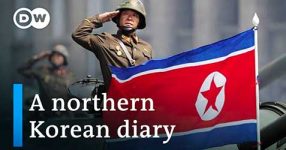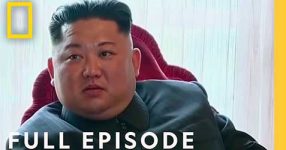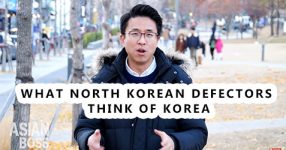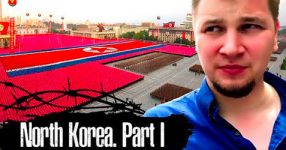In 2012, the death of North Korean Dictator Kim Jong-Il raised global curiosity about the nation’s future under his 28-year-old son, Kim Jong-Un. The documentary “Traveling through North Korea,” produced by DW Documentary, chronicles the experiences of two friends, Phillipp and the filmmaker, during their visit to North Korea in early 2013.
Booking the Trip and Restrictions
Booking a trip to North Korea posed a unique challenge as individual tourism was non-existent, and all arrangements were handled by a state agency. Before entering, the filmmakers had to declare a non-journalistic purpose, gaining permission for photos while video and sound recordings were strictly prohibited. The secrecy and restrictions set the stage for an intriguing exploration.
Arrival in Pyongyang and Controlled Tour
Choosing a 25-hour train journey from Beijing to Pyongyang, the filmmakers arrived to be greeted by two guides who functioned as their guardians throughout the seven-day visit. Staying at the Koryo Hotel and limited to guided tours, the duo was provided with a curated glimpse of North Korea’s achievements, witnessing the unique atmosphere of the Victory Day military parade.
Journey into North Korea: Behind the Scenes
The documentary delves into the challenges of conversations in North Korea, revealing the complex dynamics of mutual surveillance between guides. Dr. Rüdiger Frank, a Professor of East Asian economy, sheds light on the system’s purpose, emphasizing how encounters with foreigners are seldom solitary, fostering an atmosphere of self-censorship.
DMZ and Geopolitical Insights
The journey continues to the Demilitarized Zone (DMZ), the de facto border separating North and South Korea. The filmmakers reflect on the stark contrast in economies and ideologies while capturing unique moments, such as discussions with locals about the possibility of reunification.
Pyongyang’s Architectural Transformation
The documentary provides a glimpse into Pyongyang’s architectural metamorphosis after the Korean War. Narrated by Philipp Meuser, an architect and editor, it explores the city’s transformation into a utopian vision, with a focus on symbolic landmarks like Kim Il Sung Square and the Juche Tower.
Educational System and Daily Life
Venturing into a North Korean school, the filmmakers explore the educational system and various extra-curricular activities offered to children. Despite the restrictions, personal glimpses into the guides’ lives reveal relatable aspects, offering a nuanced understanding of North Korean society.
Arirang: Artistic Performances and Marathons
The documentary captures the grandeur of the ARIRANG performance, involving over 100,000 participants, providing a window into North Korean culture. The journey also chronicles the challenges faced during the Pyongyang marathon, revealing the changes in the country since the filmmakers’ previous visit in 2013.
Evolving Perspectives and Departure
As the documentary unfolds, the filmmakers share evolving perspectives on North Korea, acknowledging the tensions and intimacies experienced during their stay. The journey concludes with the return to Beijing, highlighting the relief and deep impressions left by the unique exploration of this enigmatic nation.












